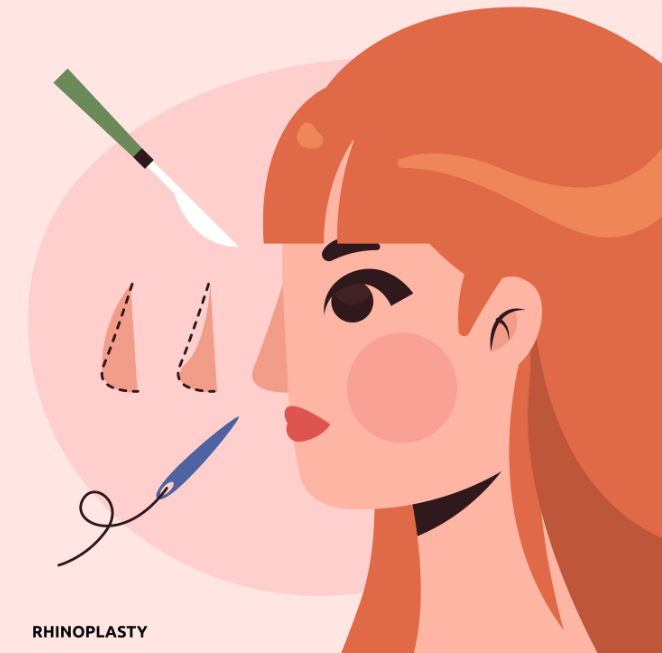Treatment Overview
Reduction revision rhinoplasty is a corrective nose surgery performed when a previous rhinoplasty has overly reduced the nasal size or shape, leaving the nose too small, weak, or structurally unstable. This procedure focuses on restoring proper proportions, balance, and functionality while correcting deformities caused by over-resection of bone, cartilage, or soft tissue.
In Korea, reduction revision rhinoplasty is a specialized field where surgeons use advanced reconstructive techniques, including cartilage grafting and structural support, to rebuild the nose. Korean plastic surgeons are internationally recognized for achieving natural, harmonious results while correcting functional issues such as collapsed bridges, pinched tips, or breathing difficulties.
Purpose & Benefits
The main purpose of reduction revision rhinoplasty is to restore natural proportions and correct complications caused by overly aggressive reduction. Benefits include:
- Restoring a natural and balanced nasal appearance.
- Rebuilding support for a collapsed or weakened nose.
- Improving breathing by reconstructing internal structures.
- Correcting pinched tips, inverted-V deformities, or scooped bridges.
- Achieving long-term stability with structural reinforcement.
- Enhancing both function and aesthetics for a natural outcome.
Ideal Candidates
Reduction Revision Rhinoplasty in Korea is suitable for individuals who:
- Had a previous rhinoplasty that left the nose overly small or weakened.
- Experience functional issues like nasal obstruction or collapse.
- Have visible deformities such as a pinched tip, flat bridge, or overly narrowed nostrils.
- Require structural grafting for support and reconstruction.
- Are in good health and have realistic expectations for revision surgery.
Possible Risks & Complications
While safe in expert hands, risks may include:
- Longer recovery due to reconstructive techniques.
- Temporary swelling and bruising (more significant than minor revisions).
- Graft-related issues (absorption, warping, or infection).
- Visible asymmetry if healing varies.
- Need for further revision in rare, complex cases.
Surgical Techniques Used
Korean surgeons employ advanced reconstructive methods for reduction revision, including:
- Cartilage Grafting: Using septal (if available), ear, or rib cartilage to rebuild structure.
- Bridge Reconstruction: Restoring height and balance if the bridge was overly reduced.
- Tip Support: Strengthening or reshaping the nasal tip with grafts and sutures.
- Valve Repair: Reconstructing internal and external nasal valves for better airflow.
- Scar Tissue Management: Removing excess scar tissue from prior surgeries to achieve smoother results.
Recovery & Aftercare
- Swelling & Bruising: More noticeable than standard revisions but improves within 2–4 weeks.
- Splints & Dressings: External splints are worn for 1–2 weeks to protect the reconstructed nose.
- Downtime: Patients usually return to light activities after 10–14 days.
- Final Results: Nose shape refines gradually, with final results visible in 6–12 months.
- Aftercare in Korea: Clinics provide swelling-reduction therapies, LED light treatment, scar prevention care, and follow-up imaging.
Results & Longevity
Reduction revision rhinoplasty provides stable, long-term results by reinforcing nasal structure rather than simply reshaping it. With Korea’s advanced techniques, patients achieve a more natural, balanced appearance while improving breathing and nasal function. Results are designed to last for many years.
Treatment Process in Korea
1. Consultation
- Surgeons assess structural damage using 3D imaging and nasal endoscopy.
- Patients review realistic goals based on available graft material and facial harmony.
2. Pre-Surgery Care
- Medical evaluation and nasal function testing.
- Planning includes donor site preparation if rib or ear cartilage is required.
3. Surgery
- Performed under general anesthesia.
- Duration: 3–6 hours depending on complexity.
- Reconstruction includes graft placement and careful reshaping for stability.
4. Immediate Post-Surgery Care
- Monitoring in recovery rooms.
- Splints applied to maintain structure.
5. Follow-Up & Aftercare
- Anti-swelling treatments, scar management, and functional breathing checks.
- International patients receive medical tourism packages with interpreters, transport, and extended aftercare.
Why Korea?
- World-Class Expertise: Korean surgeons specialize in complex reconstructive revision rhinoplasty.
- Structural Approach: Focus on rebuilding stability and function, not just appearance.
- Natural Aesthetic Results: Techniques ensure balanced and harmonious outcomes.
- Medical Tourism Support: Comprehensive aftercare and translation services for global patients.
Cost Range
Reduction revision rhinoplasty in Korea is considered one of the more complex revision procedures, often requiring grafting.
- General Price Range: ₩9,000,000 – ₩20,000,000 KRW (approx. $7,200 – $16,000 USD).
- Basic Packages Include: Surgeon’s fee, anesthesia, surgery, and follow-up care.
- Premium Packages May Include:
- Rib or ear cartilage harvesting
- Fascia or dermal grafts for additional refinement
- 3D morphing consultations
- LED/scar care therapy
- VIP recovery suites and medical tourism support
Popular Clinics
- Banobagi Plastic Surgery (Seoul): Experts in reconstructive revision and cartilage grafting.
- ID Hospital (Seoul): Specialized in rebuilding collapsed or over-reduced noses.
- JW Plastic Surgery Clinic: Known for rib cartilage techniques in complex reductions.
- View Plastic Surgery Clinic: Offers structured revision with comprehensive aftercare for global patients.
- MINE Plastic Surgery Clinic: Focuses on functional restoration and natural aesthetics.




